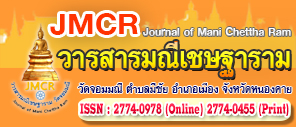STUDY PATTERNS OF PHYSICAL EDUCATION ACTIVITIES TO DEVELOP LARGE MUSCLES AT THE EARLY CHILDHOOD LEVEL IN MODERN SOCIETY
Keywords:
Activity typeAbstract
Study patterns of physical education activities to develop large muscles at the early childhood level in modern society. For physical development for early childhood children It is the growth of various aspects of the body and the development of skills Physically, have the ability to move. Maintaining body balance and controlling balance well, including helping to coordinate body relationships. To be able to do various activities with care. physical development of early childhood (ages 3 - 6 years) is changing rapidly. There is therefore parenting during this period. Effect on the quality of growth physical strength movement and balance If teachers and parents caring for children understand About development Proper parenting and developmental assessment Children will be able to fully develop their abilities and reach their full potential. Organizing activities for development The body for early childhood will help develop Large muscles, including bones and joints, have increased strength. As a result, children have appropriate growth. There is complete development in all 4 areas (physical, emotional, social, and intellectual development).
References
กระทรวงศึกษาธิการ. (2556). คู่มือการบริหารโรงเรียนในโครงการพัฒนาการบริหารรูปแบบนิติบุคคล. กลุ่มวิจัยและพัฒนานโยบาย: สำนักนโยบายและแผนการศึกษาขั้นพื้นฐาน.
กัลยา ตันติผลาชีวะ. (2561). การแบ่งประเภทของภาวะปัญญาอ่อนตาม ICD-10. วารสารราชานุกุล.
ชัยณรงค์ เจริญพานิชย์. (2553). การสร้างสมรรถภาพทางกาย. กรุงเทพมหานคร: มหาวิทยาลัยรามคำแหง.
นิรมัย อ่อนน้อม. (2559). สมรรถภาพทางกลไกของนักเรียนสาธิตมหาวิทยาลยศรันครินทรวิโรฒประสานมิตร. กรุงเทพมหานคร: มหาวิทยาลัยศรีนครินทรวิโรฒ.
ปรมพร ดอนไพรธรรม. (2560). การเรียนรู้ทักษะกลไกทางด้านร่างกาย พลศึกษาประถมศึกษาปีที่ 2. กรุงเทพมหานคร: ม.ป.พ. ถ่ายเอกสาร.
พรรณิดา ผุสดี. (2560). สมองกับการเรียนรู้. เอกสารประกอบการฝึกอบรมคุรุการศึกษาพิเศษ รนท 6. กรุงเทพมหานคร: คณะศึกษาศาสตร์ มหาวทยาลัยศรีนครินทรวิโรฒ.
เยาวภา เดชะคุปต์. (2558). โภชนาการสาธารณสข. ถายเอกสาร.
วิภา ศรัทธาบุญ. (2559). การออกกำลังกายที่มีผลกระทบต่อระบบร่างกายสรีรวิทยาการออกกำลังกาย. กรุงเทพมหานคร: สำนักพิมพ์แห่งจุฬาลงกรณ์มหาวิทยาลัย.
ศักดา ประจุศิลป และ สุกัญญาแสงมุข. (2560). ศิลปะและกายวิภาคศาสตร. กรุงเทพมหานคร: ป. สัมพันธ์พานิชย์.
สำนักงานการประถมศึกษาแห่งชาติ. (2561). แผนการศึกษาแห่งชาติ พ.ศ. 2560–2579. กรุงเทพมหานคร: พริกหวานกราฟฟิค.
สุภัทรา จันทร์คำ. (2567). เรียบเรียงโดย นักจิตวิทยาเด็กและครูปฐมวัย Brain Kiddy. https://www.brainkiddy.com/article/216/หลักสูตรbrain-kiddy ค้นหาเมื่อ 5 พฤษจิกายน 2567
Sapporo & Elmer. (1967). Man and movement. 2 . Philadelphia: Lea and Fibiger.
Gesell V.R. (2002). The effects of rhythmic movement, tactile–stimulation program on the gross motor skills of children with learning disabilities. Master abstract international. 34(4): 1574
Woodill et.al., (1992). Gross motor development in preschool children considered to be at risk for academic failure. Dissertation.


